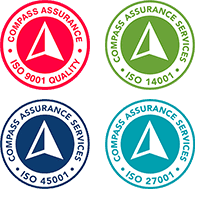Convincing the board to invest money, time and resources in technology is no small feat. It can be a nerve-racking task to have just one chance to present to not one, but multiple people, on the value of a technology upgrade to the organisation.
I got a reminder of just how hard a task it is when I was recently awarded the role of presenting to our board on moving to Microsoft Teams. Now I know this technology inside out given my role at IComm, but despite this comfort with the topic, it was still a stressful experience to convince others of something I was already sold on.
It went well – something I was very grateful for. However, afterwards I thought to myself, plenty of IT departments and CIOs are likely going through, or will go in the future, through this same process, so it might just be worth me sharing some tips that helped me get Microsoft Teams over the line with our Board.
Stu's Tips for Selling Technology Into the Board
Tip 1: Know your stuff
Really knowing your subject goes a long way towards delivering a convincing presentation to the board. While knowing the technology you want to integrate really well is vital, your research should go well beyond studying the technical aspects of the new solution before presenting the case to the board.
You also need to know your organisation really well – how many people will be affected, what are their roles in the organisation, how will different people benefit from the new technology, why isn’t the old technology fit for purpose anymore, will the integration affect any external stakeholders and what efficiencies and cost reductions will be achieved?
Then there’s the project scope – how will the new technology be integrated, is the network infrastructure able to support the new technology, will it be a staged roll-out, do some existing technologies need to stay and be integrated with the new, what training will be provided and when, what cutover support will be available?
Don’t forgot to get to know who your board members are – what makes them tick, what are their business priorities, what motivates them. And this is just scratching the surface…
Tip 2: Prepare a solid presentation
Once you know your stuff, you are ready to prepare a presentation that will keep board members engaged, and you on track. The thing is, many of us don’t set aside enough time to make the presentation solid. We get caught up on other projects and severely underestimate the time it will take. Make the time for it – it’s worth it.
With your presentation - don’t just tick off the boxes. Think about how you can mix it up to make it more engaging with video demos and visuals. But don’t go too crazy and complicate things – keep your message clear, on topic and to the point.
Tip 3: Change management is non-negotiable
Show board members that you’re truly committed to making the technology integration a success by making change management non-negotiable.
Explain how a good change management program can be the difference between a technology that is actually used well by the organisation and one that is just integrated and under-used. It will prepare your entire organisation for a change in technology and ensure that all employees understand how the technology will benefit them. The key outcome for your organisation is an engaged workforce actively working together to create and implement change throughout the whole system.
Tip 4: Talk business, not tech
While the world of tech might be your forte, it’s unlikely that board members are as interested in or knowledgeable about technology as you are. Make sure you acknowledge this by not getting bogged down in technical terms and jargon that will leave your board members behind.
Also, be aware that tech features alone aren’t going to convince the board to invest in a new technology anyhow. Make sure you weave in how the key features of the technology you’re proposing to integrate fit with the board’s business priorities and plans, such as increasing efficiencies, delivering a more flexible workplace or reducing costs.
Tip 5: Practice makes perfect
Just as it’s important to make the time to prepare a solid presentation, it’s also important to make time to practice your presentation so that after all your hard work, it doesn’t fall flat due to poor delivery on the day.
The more you practice, the more familiar and comfortable you’ll become with your content and the more natural and convincing your presentation will be. By knowing your content, it also makes you less reliant on reading notes, which means you can stay engaged with and read the room so you can quickly adapt if you feel like you’re losing board members’ attention.
Even better, why not enlist a colleague to act as your test audience for the presentation, so they can provide feedback and a different perspective.
Tip 6: Brainstorm questions and responses
It would be remiss of board members not to have loads of questions following your presentation. With this expectation, then, don’t just wait to be surprised on the day and fumble your way through answers to these questions.
Spend time brainstorming some of the questions you expect might be fired at you and come up with responses to these so you’re ready and prepared when the time comes. If you present to a colleague, they may also be able to help come up with potential questions.
But also accept that questions might come up that you don’t immediately know the answer to. If that’s the case, don’t just wing it and give an answer that could prove inaccurate – tell them you’ll come back to them with the answer once you’ve had a chance to investigate it further following the presentation.
Tip 7: Timing is everything
Your board members are no doubt very busy people who don’t have a lot of time to spare. Respect this by not going overtime with your presentation. In fact, you should time it to end with enough time spare at the end of your presentation so board members have a chance to air all the questions they might have.
I hope these tips assist you in your next presentation to your Board of Directors. The Board is there to keep the organisation accountable, and sometimes that can feel overwhelming. But remember - if you have the best interests of your organisation in mind, how can you go wrong?
Good luck!

 Back
Back
